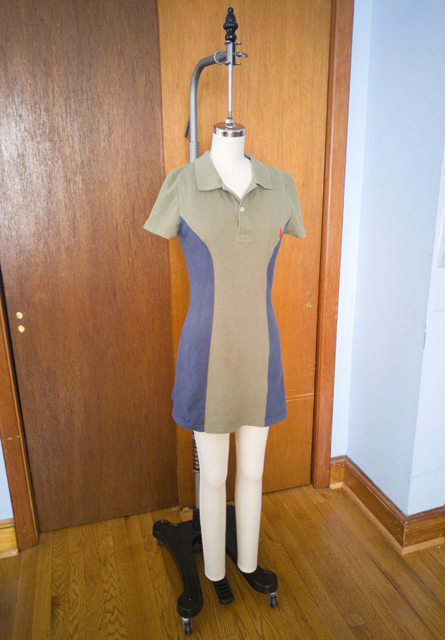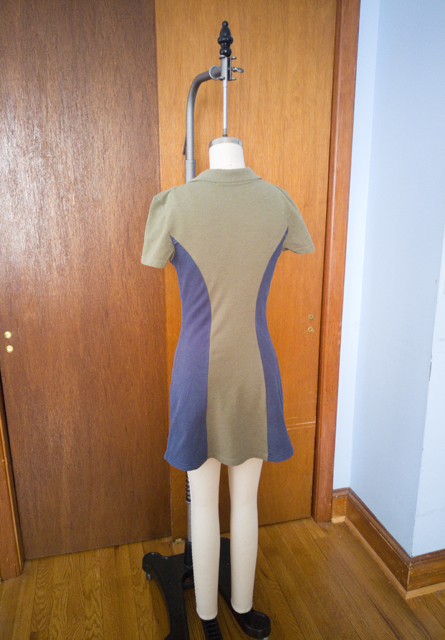
During the first quarter of 2017, Justin was let go from his office job and was put in a position where he needed to take temporary work for a time. Options were sparse, however, and he ended up in a more a physical job than he expected, one that had him on his feet all day handling things that were frequently sharp, greasy, or caustic. There wasn’t a strict dress code, so for the first couple of months he kept wearing his favorite t-shirts and polo shirts to work. His motive was understandable: faced with mindless tasks he didn’t enjoy in the sub-basement of a company that didn’t value him as an (expendable, temporary) employee, he clung to the one thing that made him feel like a person. Who can blame him?
Unfortunately, several of his shirts quickly sprouted holes, grease stains, and bleach marks. One of those shirts was a particularly nice polo from Ralph Lauren, in a flattering shade of green, that he’d received as a gift for Christmas.
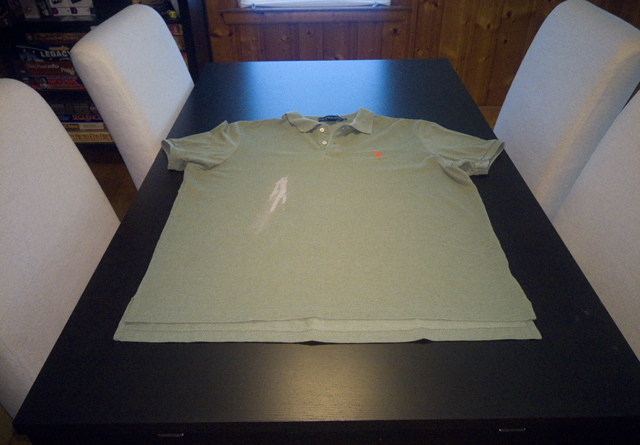
The stain was too large and too prominent to cover up discreetly, but I was loath to throw away a good shirt that was otherwise in pretty decent condition. After eyeballing it several times and then trying it on (it was a men’s XL), I decided I could salvage it by turning it into a dress for me. I knew the dress had to have princess seams to avoid the stain, and I didn’t have anything in my pattern stash like that.
After flipping through both online and in-store pattern books, I settled on New Look 6567.
It’s designed for wovens, but it was the only pattern I could readily find that had the style lines I was looking for. I ignored the various neckline options and the back zipper, since I planned to preserve the original collar and placket and leave the dress a pull-on affair.
I cut the shirt apart at the side seams and removed the sleeves, but left the front and back attached at the shoulder and left the bottom hem intact. Based on my measurements and what I thought was an acceptable amount of ease, I traced a size 6, and then proceeded to shift the pattern pieces around on top of the shirt until the grainline was parallel with the center front and the slope of the shoulder on the pattern roughly aligned with that of the shirt. I had to dodge the bleach stain, and I also wanted to preserve the logo embroidery if possible—I liked the contrast of orange on green.
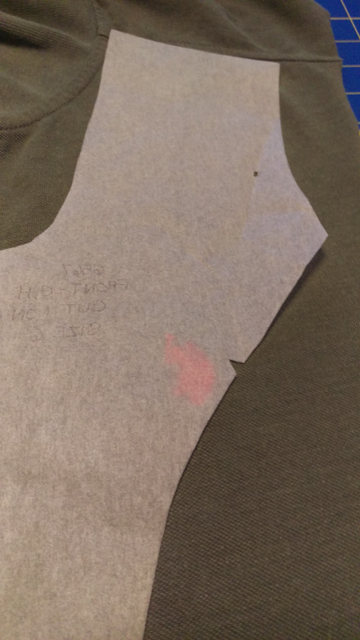
As soon as I started playing pattern-piece-Tetris, I realized there was a problem: although the shirt was plenty wide enough on me, I wasn’t able to fit the side front and side back pieces on the shirt and respect the grainline without losing a significant amount of length from the bottom. (I wish I had a photo showing this, but I forgot to take one.)
I briefly despaired, then raided Justin’s closet and dug out another polo shirt that was destined for the refashioning pile. This one was a different brand with a different cut, and it was white. The shape didn’t matter so much since I was cutting the pieces out of the middle, but I decided the white was too stark a contrast, so I over-dyed it navy using Rit liquid dye leftover from a Halloween costume project a few years ago. As with my other dyeing experiments, I used the stovetop method and it worked a treat.
With these cutting hurdles behind me, the dress sewed up quickly. I basted everything on my regular sewing machine and then sent it through the serger to seam and finish the edges. The logo just narrowly avoided being eaten by the seam.
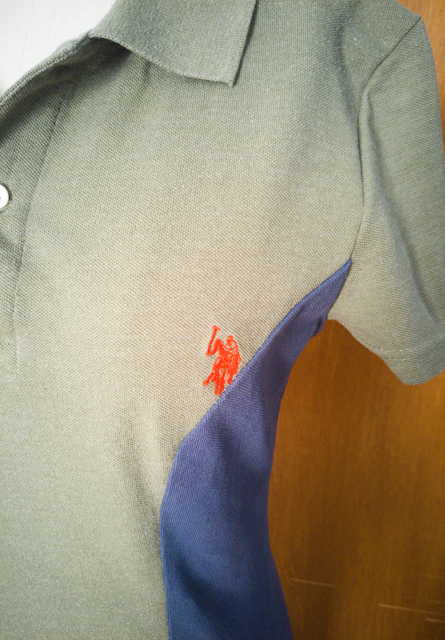
Perhaps the only thing that would give away the secret of this dress’s origins are the teeny, tiny seams near the back underarm, which were the part of the shoulder seams on the white-shirt-turned-blue-shirt.
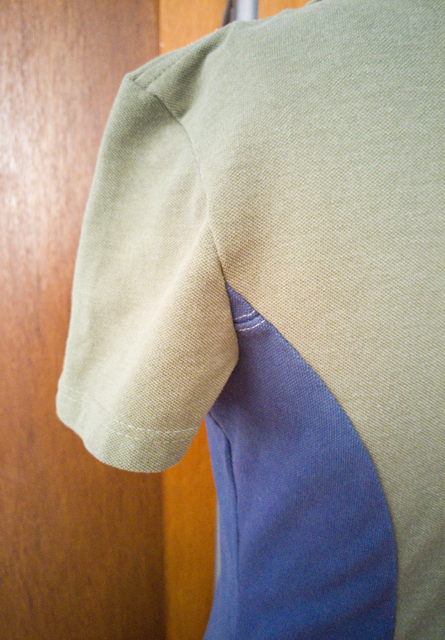
A split hem seemed a like a classic design choice. The back of the dress ended up several inches longer than the front, so I ended up cutting off the excess and re-hemming the back in coordinating thread for each panel.
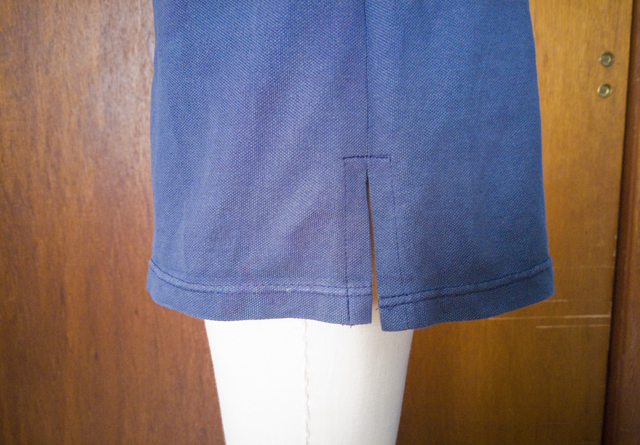
Overall I like the way the dress turned out—it looks pretty much exactly like I envisioned it—but it’s just a little too snug and a little too short to feel comfortable walking around in. (These dress form shots are a bit deceiving, since it hasn’t been padded out to my measurements yet.) I can see that I overestimated how much the pique would stretch horizontally when choosing a size, and what felt long enough in a baggy cast-off is different from what feels long enough in a more figure-skimming silhouette. If I do a refashion like this again—I’m definitely interested in trying, I’d just need to thrift a couple more shirts—I’ll size up in both pattern and shirt so that I can get the fit I’m looking for.
Since I don’t know anyone smaller than me, this dress is headed to the thrift store, but at least that’s better than heading to a landfill, right?

